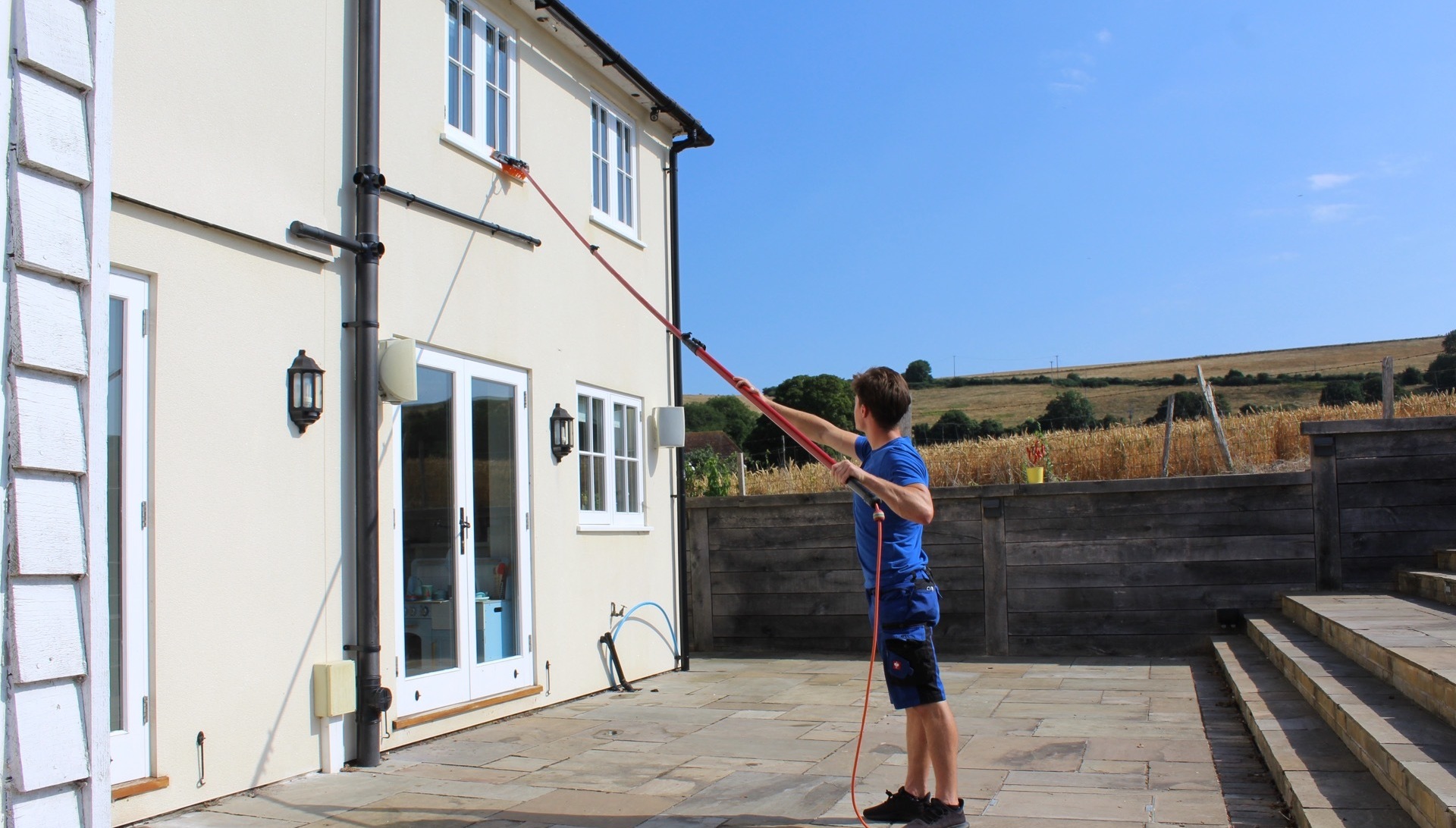Pure Water Window Cleaning - The Basics
Posted on 6th April 2020 at 20:10
Written by T Buckley, Director
Read time: 4 minutes
Pure water window cleaning, Water fed pole, Tucker Pole, Reach and Wash, all names given to what we consider to be the most complete and thorough window cleaning method there currently is.
In this blog we'll cover the basics of pure water window cleaning. We'll also look into why reach and wash has earned a bad name in some cases and clear up some negative claims to help you find clarity when it comes to choosing what to spend your money on.
So what is pure water window cleaning?
Unlike the traditional method of using a ladder, bucket, applicator and squeegee, pure water window cleaning - or reach and wash as its more commonly known, uses lightweight telescopic poles with a fixed soft brush head at the end, which feeds water onto the window for the operative to then use to clean the glazing, frames and ledges.
Purified water is made using regular mains water which is forced through a series of filters; the first is a paper filter to remove any sediment, the second is a carbon block filter to remove any chlorine and on the final stage the water passes through a vessel of high grade resin which 'polishes' the water. Polish is a term used to describe the final stage of the filtration. This entire process removes the tiny microscopic particles found within the water, such as calcium which is what often causes those streaky white marks.
Have you ever hosed down your windows or car only to find it dries with what looks like chalky drip marks? That's usually caused by a high chalk and calcium content within the water.
This pure water allows for the windows to be rinsed and left to dry which results in flawless, streak and spot free finish every time.
The benefits of pure water window cleaning
Purified water allows for a full and complete clean of all windows and frames without the need of a ladder, which in todays world is ideal for keeping workers safe and minimising the risk of accidents.
With the use of a soft bristle head, operatives are able to give the individual window units a thorough yet gentle wash, removing the dust, bird poo or dirt that may be stuck to the glazing as well as any moss that may be growing upon the frames. The brushes are also very effective in removing spiders nests that I'm sure you've seen stuck in the top corners of the windows - have a look when you're next at home!
The telescopic poles enable window cleaners to clean what once would have been hard or impossible to reach areas, such as windows above conservatories or velux windows that are situated high upon the roof. They're also lightweight enough to be handled with ease even when at full extension, which can range up to 70ft! Many people also mention that they feel less comfortable with the idea of someone peering through their window when up a ladder.
Why has it sometimes earned a bad reputation?
Occasionally a window cleaner somewhere does the reach and wash name an injustice. Often by leaving behind streaky windows peppered with chalky drips. This often boils down the one primary reason; poor water quality. The filters used to filter and purify the water generally last 3-6 months depending on the amount of water that has been forced through them. If they're not changed often enough they will eventually become full of sediment and will no longer be able to remove the particles from the water.
The conclusion
When choosing your next window cleaner take into consideration what the access is like around your property. Are there some awkward windows that are not accessible by ladder, do you have velux window on the roof or do you simply prefer some privacy at home. That being said, if you're looking for a comprehensive clean in the which includes all parts of the windows and frames , then water fed pole may be the solution for you.
Want to know more, leave a comment below!
Share this post:







